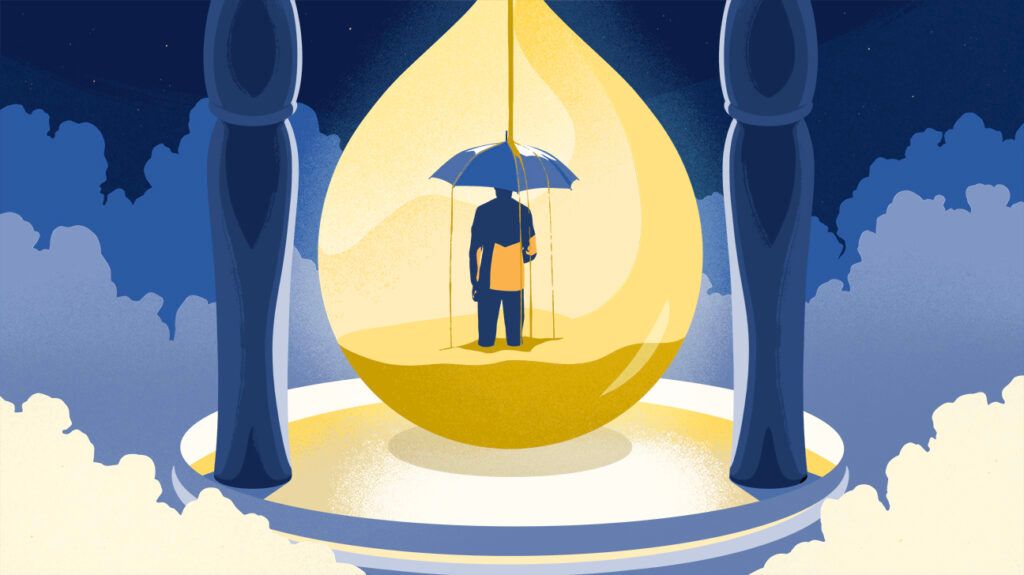Death is unavoidable, but for some, so is the fear surrounding it.

Everyone knows that death is inevitable. Even so, anxiety to the point of a phobia is common and often intertwined with other mental health conditions.
Do you find yourself avoiding particular situations for fear of harm or death? Or, do you find that your other diagnosed mental health conditions are connected to a fear of dying?
If so, you could potentially have death anxiety.
Death anxiety, formally known as thanatophobia, is the fear of your own death or process of dying. This is different from necrophobia — a more general fear of dead or dying people and things.
The term thanatophobia comes from the Greek words “thanatos,” which translates to death, and “phobos,” which translates to fear.
While death anxiety is not a formal condition in the Diagnostic and Statistical Manual of Mental Disorders, 5th edition (DSM-5), it can be considered a specific phobia.
Death anxiety is one of the most common fears. However, your negative or uneasy feelings around the idea of death and dying may not be a full-blown phobia. How can you tell the difference?
Since death anxiety is not considered a condition in the DSM-5, the criteria for a specific phobia may be used to determine if your fear of death is a phobia.
Those criteria include:
- lasts longer than 6 months
- interferes with day-to-day life and relationships
- is present whenever the subject of death comes up
- leads to avoiding any situation that involves death or dying
If you’re in a situation that may trigger anxiety, the physical responses can look like:
- general uneasiness
- shortness of breath or trouble breathing
- nausea
- headaches
- increased heart rate
- irritability
There’s no exact cause for death anxiety, but factors may contribute to the condition.
Social influences
In a recent review, religion was cited as both a potential cause for death anxiety and a means to find comfort from it.
For some, the idea of death leading to freedom and meeting “God” or the deity you ascribe to brings comfort. For others, the idea of paying restitution for behavior on Earth triggers said anxiety.
Life experiences
For some, having experienced traumatic events can lead to death anxiety. This could be the loss of a loved one or having a near-death experience.
Mental health conditions
This particular phobia can be connected to several other types of conditions. In a 2014 study, researchers referred to death anxiety as a transdiagnostic construct. This is because they found that death was at the root of many other mental health conditions, particularly panic disorders.
Other disorders that death anxiety may be connected to include:
Death anxiety is thought to be at the root of other types of phobias. For example, a person’s fear of snakes could relate to a concern of being bitten and dying. Or, someone with a fear of heights could be ultimately concerned with falling and dying.
They both are connected to extreme anxiety around death, even though that’s not the surface-level fear.
The same can be said of conditions like separation anxiety or agoraphobia. Agoraphobia is the fear of not being able to escape if an anxiety attack occurs. This often results in someone avoiding particular public areas, modes of transportation, or potentially leaving the house at all.
Separation anxiety, usually seen in children, is the fear of not being near a parent or guardian, and both potentially relate to safety and the avoidance of harm or death.
Similarly, if you have obsessive-compulsive disorder (OCD) or are a compulsive checker, there’s a good chance that your need to ensure the stove is off or the front door is locked may be connected to avoiding harm or death.
Death anxiety is also connected to hypochondria — aka illness anxiety disorder — and somatic symptom disorder. While these two illnesses are similar, they can vary slightly.
According to the DSM-5, somatic symptom disorder leads to experiencing varied and unexplained levels of pain and complications.
For the condition to fall into this category, it has to include complaints related to sexual function, neurological issues, gastrointestinal issues, and four areas of physical pain.
These complications are usually specific to particular areas, not fake, and cause an extreme amount of distress for the individual.
Illness anxiety can show up with someone refusing to be seen for fear of their health not being taken seriously or consistent doctor’s visits for fear of dying without care. Sometimes, people with illness anxiety mistake typical bodily functions as symptoms of severe conditions.
Both illness anxiety disorder and somatic symptom disorder often lead to frequent visits to a doctor and checkups and revolve around a fear of illness and death.
According to the 2014 study, social support is a factor in both the development and treatment of death anxiety. While people from varied backgrounds and experiences can develop death anxiety, rates are lower for those in reasonably good health and have high self-esteem.
The study also suggests that a positive outlook on life can play a role in anxiety as well. Because of this, different types of therapy and shifts in perspective are suggested as part of treatment. This can include:
- psychotherapy, such as cognitive behavioral therapy
- medication
- exposure therapy, particularly for death anxiety that is connected to other phobias
In addition to traditional treatments, such as medications and therapy, there are things you can do at home to help relieve death-related anxiety.
Some things you can try include:
- deep breathing exercises
- exercise
- eating a healthy, balanced diet
- mindfulness or relaxation techniques
Even though death is inevitable, death anxiety is not uncommon. Many who navigate compulsive disorders, panic disorders, or other phobias can also have death anxiety.
General anxiety and depression can also be connected to death anxiety and more debilitating conditions such as agoraphobia or illness anxiety.
The anxiety can be pervasive, but it can also be treated.
If you feel that your anxiety and phobia around death interfere with your regular daily responsibilities and last longer than 6 months, consider checking in with a healthcare or mental health professional to discuss your potential options.
